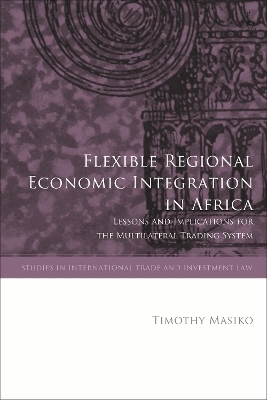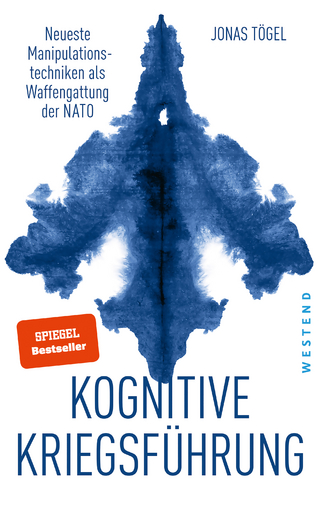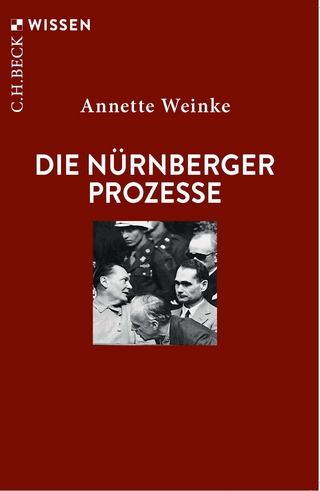
Flexible Regional Economic Integration in Africa
Hart Publishing (Verlag)
978-1-5099-4500-9 (ISBN)
This book is a historical evaluation of regional economic integration efforts in Africa and it follows the path of attempts to integrate the economies on the continent from colonial times to the birth of the AfCFTA. While it is a study in law, it relies heavily on politics, economics and history to weave together a more complete theory of economic integration based on the African experience.
Flexible Regional Economic Integration in Africa was awarded the 2020 SIEL–Hart Prize in International Economic Law.
Timothy Masiko is Teaching Associate at the University of Nottingham, UK.
1. Introduction
I. The East African Community (EAC)
II. Flexible Regional Economic Integration
III. The Approach
IV. Significance
V. Overview
2. Integration Theory
I. Deciphering Regional Economic Integration
II. A Brief Revisiting of Integration Theories
A. From Autarky to Single Markets
B. Why Integrate?
C. How We Integrate
D. The Effects of Integration
E. The Complexity of Theorising
III. Pan-Africanism, Integration Theory and the African Experience
A. Reasons for Integration in Africa
B. The Slow Pace of Integration in Africa
IV. Summary: Theories, Realities and the Ensuing Frustration
3. Flexible Regional Economic Integration
I. A Definition of Flexible Regional Integration
A. A Principle of Flexibility
B. Progression in Cooperation
C. A Subgroup of Members
D. A Larger Integration Scheme
E. A Variety of Areas
F. Different Speeds
II. Streamlining Definition: Flexible Regional Economic Integration
III. The Application of Flexible Regional Economic Integration
A. Flexible Integration: A Broad Spectrum
B. Flexible Integration in Africa
C. Beyond Africa: Flexibility in the EU and MERCOSUR
IV. Arguments in Favour of Flexible Integration
A. Reasons for the Existence of Flexible Integration
B. Benefits of Flexible Integration
V. Criticisms of Flexible Integration
VI. Summary
4. An Introduction to the EAC
I. Early Beginnings
II. The Second Attempt
A. Harmonised Economic Policy
B. Common Institutions
C. The Common Market
D. The Second Collapse
III. The EAC Today
A. Policy Harmonisation
B. EAC Institutions
C. The EAC Customs Union and Common Market
IV. Looking Forward
V. Summary
5. Flexible Regional Economic Integration in the East African Community
I. A Brief History of Article 7(1)(e) of the EAC Treaty
A. The Double-Edged Context
B. The Unchanging Clause
C. The Connection between the Unchanging Clause and the Africa-wide Link
II. Why Flexible Regional Economic Integration in the EAC?
A. Political Factors
B. Economic Factors
III. Summary
6. The Northern Corridor Integration Projects
I. An Introduction to the NCIP
A. The Projects
B. Participating States and a Brief Review of Relations between them
C. The Politics of the East African Community
II. Milestones to NCIP’s Establishment
A. EACJ Advisory Opinion No. 1 of 2008
B. The Entebbe Meeting of 25 June 2013 and Subsequent NCIP Summits
C. Precipitating Factors
D. Protestations from Tanzania and Other Criticisms
III. Effects of the NCIP
A. Trade Patterns
B. Relations between the EAC Partner States
C. Relations between the EAC and Third Parties
IV. Summary
7. The Africa Continental Free Trade Area
I. A Brief History of the AfCFTA
A. Faltering, Learning and Unlearning: 1960–1980
B. The Post-Lagos Surge: 1980–2018
II. AfCFTA: Objectives, Principles and Enabling Factors
A. AfCFTA: A Long Time Coming, But Why Now?
III. The EAC and AfCFTA: Mother and Child, or Egg and Fowl?
A. The Egg and Fowl Debate
B. The EAC and AfCFTA: Friend or Foe?
C. AfCFTA: The EAC Supersized?
IV. Summary: Is the AfCFTA a Case for or Against Flexible Integration?
8. Beyond the Regions: Flexibility in Multilateral Trade
I. The WTO Today – A Single Undertaking?
A. Inconsistent Commitments
B. Transitional Arrangements
C. The Plurilateral Agreements
D. The Critical Mass Approach
E. ‘Trade And –’
II. Why Has Flexibility Been Avoided?
A. The Reason for the Rules
B. The Rule about the Rules
C. The Sovereignty Debate
D. The Ironic Role of Regional Trade Agreements (RTAs)
E. The Fragility of Practicality
III. The Big Question: How?
A. How Would Multilateral Flexibility Look?
B. How do we Sell Multilateral Flexibility?
9. Flexibility: Looking Ahead
| Erscheinungsdatum | 19.04.2022 |
|---|---|
| Reihe/Serie | Studies in International Trade and Investment Law |
| Verlagsort | Oxford |
| Sprache | englisch |
| Maße | 156 x 234 mm |
| Themenwelt | Geschichte ► Teilgebiete der Geschichte ► Militärgeschichte |
| Recht / Steuern ► EU / Internationales Recht | |
| Recht / Steuern ► Rechtsgeschichte | |
| Wirtschaft ► Volkswirtschaftslehre ► Makroökonomie | |
| ISBN-10 | 1-5099-4500-8 / 1509945008 |
| ISBN-13 | 978-1-5099-4500-9 / 9781509945009 |
| Zustand | Neuware |
| Haben Sie eine Frage zum Produkt? |
aus dem Bereich


